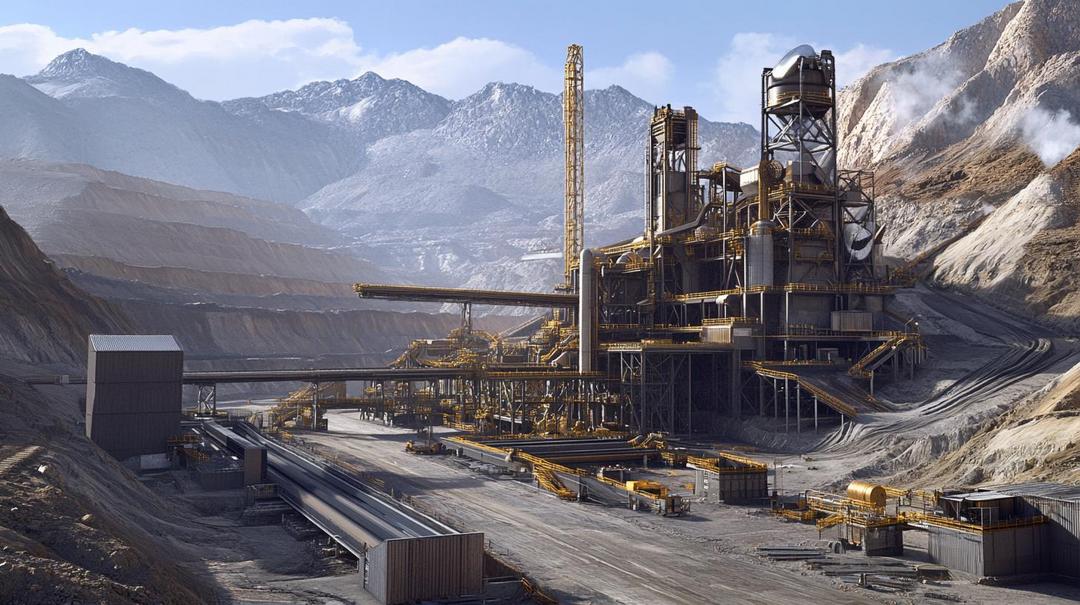The world relies on just a handful of countries for the crucial materials that power everything from your smartphone to wind turbines. Did you know that over 70% of the world’s rare earth supply comes from a single nation? Yes, you read that right! In this article, we’re breaking down the biggest players in rare earth production, revealing production stats, global trends, and the geopolitical dynamics shaping this critical industry. Whether you’re a policy maker, an academic, or an industry professional, buckle up for an insightful deep-dive into the world of rare earth elements—where economics meets geology in a high-stakes game.
Let’s dive in!
What's Inside
What Are the Top Rare Earth Producing Countries?
Global rare earth production is a complex landscape dominated by a handful of strategic players. As of 2023, the top rare earth-producing countries demonstrate significant variations in output and geopolitical influence.
Global Rankings Overview
- Total global rare earth production reaches approximately 300,000 metric tons annually.
- Top producers include China, the United States, Australia, and Myanmar
- Production volumes fluctuate based on technological demand, environmental regulations, and geopolitical tensions
China: The Titan of Rare Earth Production
China remains the undisputed leader in rare earth element production, commanding an overwhelming market position.
Production Dominance
- Produces approximately 210,000 metric tons annually
- Controls roughly 80% of global rare earth processing capacity
- Maintains extensive, vertically integrated supply chains
Strategic Advantages
- Abundant geological reserves in Inner Mongolia and southern provinces
- Decades of infrastructure investment in rare earth extraction
- Sophisticated processing and refinement technologies
The Rising Stars: Emerging Rare Earth Producers
Country Spotlight
- United States: ~43,000 metric tons annually
- Australia: ~21,000 metric tons annually
- Myanmar: ~25,000 metric tons annually
Key Development Challenges
- Establishing competitive processing infrastructure
- Navigating complex environmental regulations
- Developing efficient extraction technologies
The Rest of the Top 10 Rare Earth Producers
Emerging Market Participants
- India: Expanding rare earth exploration and processing capabilities
- Russia: Leveraging existing mining infrastructure
- Brazil: Developing new extraction sites in mineral-rich regions
- Vietnam: Increasing investment in rare earth exploration
Why Rare Earth Production Matters: Economic and Geopolitical Implications
Critical Applications
- Essential for high-tech electronics
- Crucial in renewable energy technologies
- Fundamental to advanced defense systems
- Key components in electric vehicle manufacturing
Geopolitical Dynamics
- Supply chain vulnerabilities exposed by US-China tensions
- Increasing resource nationalism
- The strategic importance of diversifying rare earth production
Environmental Challenges in Rare Earth Mining
Sustainability Concerns
- Significant environmental impact from extraction processes
- High water consumption
- Potential toxic waste generation
- Substantial carbon footprint
Mitigation Strategies
- Development of more sustainable mining practices
- Increased focus on recycling rare earth elements
- Investment in cleaner extraction technologies
Rare Earth Production Trends in 2024 and Beyond
Emerging Developments
- Increased global production diversification
- Technological innovations in extraction methods
- Growing emphasis on sustainable mining practices
- Potential shifts in global supply chain configurations
Predictive Outlook
- Expected growth in non-Chinese production capacities
- Continued technological advancements
- Increasing geopolitical complexity in rare earth markets
Conclusion
China firmly holds the reins, but emerging players like Australia and the U.S. are shaking up the dynamics. As demand continues to skyrocket, the global race for these vital resources will only intensify, bringing economic opportunities, environmental challenges, and geopolitical shifts. Stay informed, as the rare earth story is far from over.
FAQs
What are rare earth elements, and why are they important?
Rare earth elements are 17 chemically similar elements critical in manufacturing high-tech products, including smartphones, wind turbines, and electric vehicles.
Which country produces the most rare earth elements?
China is the leading producer, contributing over 70% of the world’s rare earth supply in 2023.
How does rare earth production impact the environment?
Rare earth mining processes can generate toxic waste, cause soil and water pollution, and lead to deforestation. However, sustainable practices and recycling efforts are being developed to minimize these impacts.
Are there substitutes for rare earth elements?
While researchers are exploring alternatives for specific applications, such as synthetic materials, many rare earths have unique properties that are difficult to replicate.
How do geopolitical tensions affect rare earth supply?
Tensions, such as U.S.-China trade conflicts, often lead to supply chain disruptions, export restrictions, and price fluctuations in rare earth markets.


Dustin
Driven by a fascination with rare earth elements and their role in powering modern tech and engineering marvels. A true car and tech enthusiast, he loves exploring how these hidden heroes fuel our most exciting innovations.
You Might Also Like…